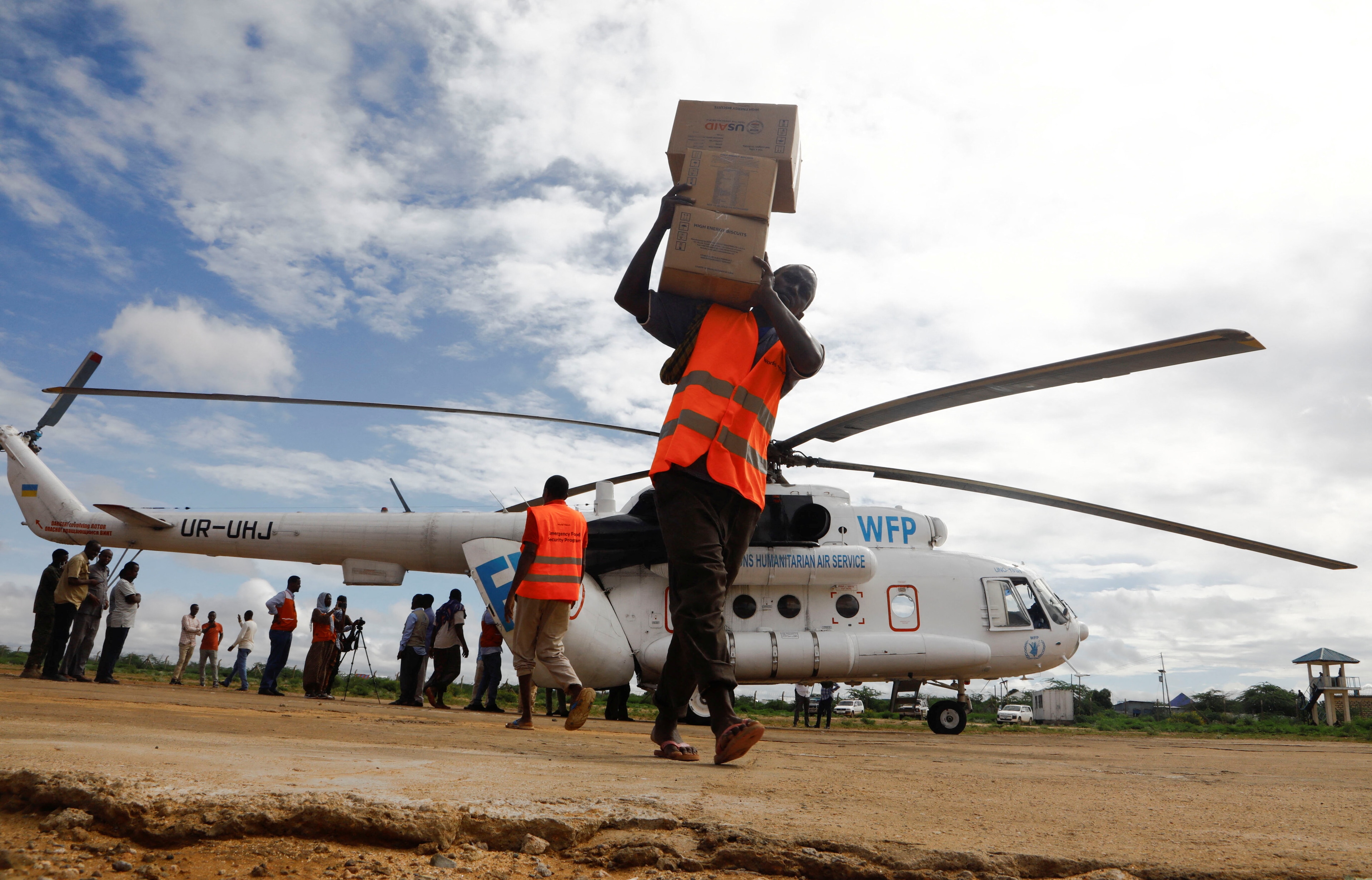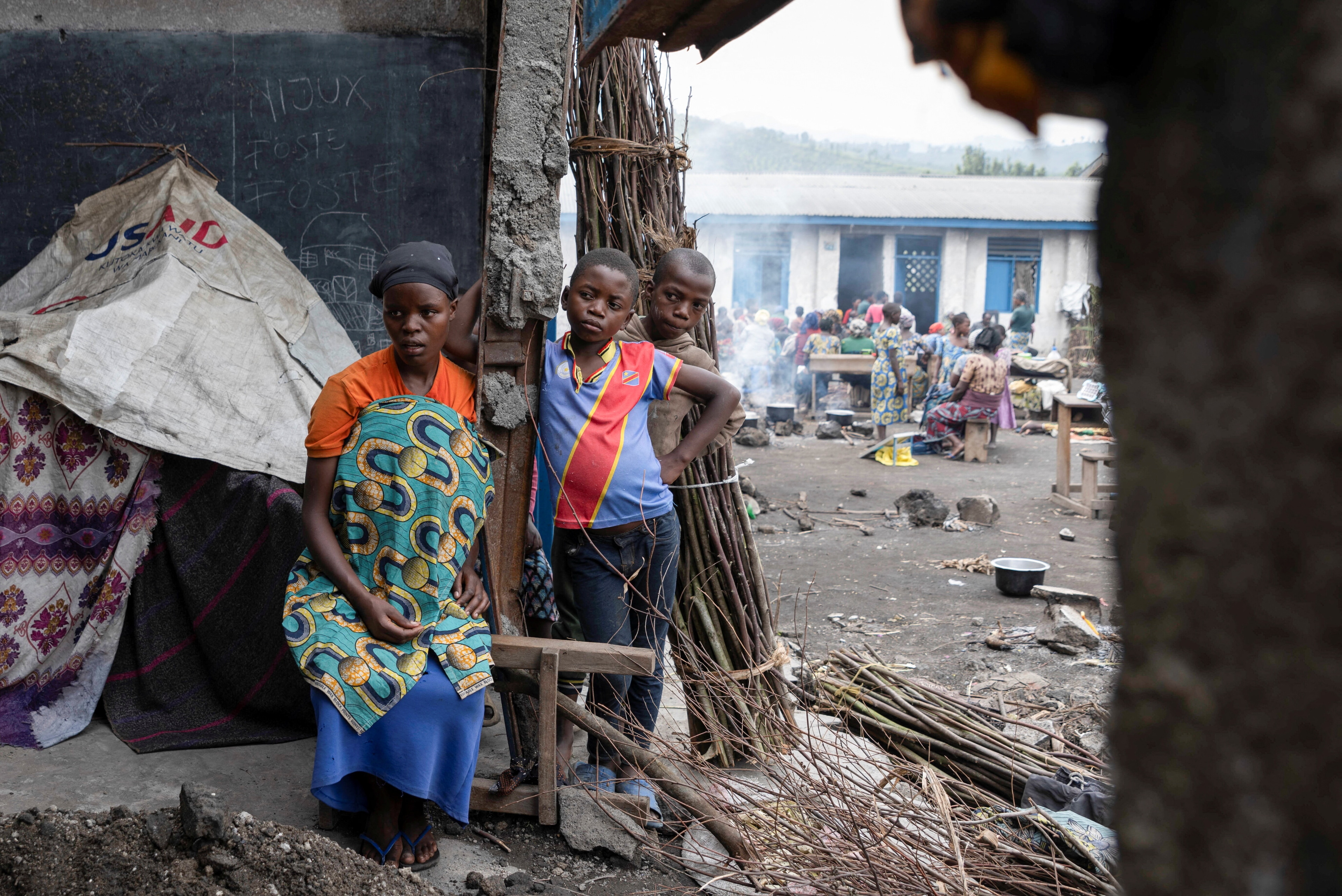A peace deal to end a decades-long conflict in Southeast Asia is under threat. Here’s how it can be saved
Despite peace agreements, Mindanao is still under martial law
Image: REUTERS/Romeo Ranoco
Stay up to date:
Philippines
This article is part of the World Economic Forum's Geostrategy platform
In the conflict-afflicted island of Mindanao, residents voted this year to approve a landmark peace deal that it is hoped will signal an end to one of Southeast Asia’s bloodiest and most intractable insurgencies. Since the early 1970s, separatists have waged an armed campaign against the central government in Manila in pursuit of full independence or greater political autonomy for the region’s oppressed Moro Muslim population. After failed peace agreements and false dawns in 1976, 1989 and 1996, the past year has seen major progress.
July 2018 witnessed the signing of a historic peace accord between the government of President Rodrigo Duterte and Mindanao’s largest Muslim insurgent group, the Moro Islamic Liberation Front (MILF). The deal – known as the Bangsamoro Organic Law (BOL) – provided the legislation needed to create a new self-governing region to replace the flawed Autonomous Region in Muslim Mindanao (ARMM).
A public vote was held across two days in January and February, with a majority needed to ratify the BOL in each jurisdiction. Turnout exceeded 85% as residents voted overwhelmingly in favour of the proposed new region, which will be called the Bangsamoro Autonomous Region in Muslim Mindanao (BARMM).
In the five existing ARMM provinces of Basilan, Lanao del Sur, Maguindanao, Sulu and Tawi-Tawi, a combined total of 1.54 million people voted in favour while just 198,000 voted against. After polling closed in non-ARMM areas, it emerged that Cotabato city had also voted to join the new BARMM and will become its seat of government. More than 20 villages in North Cotabato province voted in favour to ensure the BARMM will be larger and more populous than its predecessor ARMM.
The new jurisdiction will have its own 80-member elected parliament, headed by a chief minister. The region will receive 75% of taxes collected within its territory, while benefiting from central government grants and improved access to natural resource revenues. Rebel leaders are also hopeful the new region will be a significant improvement on the flawed ARMM, which has been associated with corruption and criticised for constituting autonomy in name only.
Post-Marawi attacks
While the government and the MILF have pursued peace, several ISIS-aligned groups have remained active. The main protagonists of the Marawi siege, the ASG and the Mautes, are still alive despite having suffered heavy losses during the conflict. The ASG has reverted to launching attacks in its remote island lairs of Basilan, Sulu and Tawi-Tawi, while the Mautes are still thought to be recruiting in Lanao del Sur. The BIFF is the strongest jihadi group in the region, with around 400 fighters in the provinces of Maguindanao, North Cotabato and Sultan Kudarat.
These groups have committed a series of high-profile attacks aimed at disrupting the peace process. Just five days after the BOL was inked last July, a Moroccan suicide bomber with ties to the ASG detonated his device at an army checkpoint near Lamitancity, killing 11 people. BIFF bombings targeted the Sultan Kudarat town of Isulan on 28 August and 2 September, killing five and injuring 49 civilians. The post-BOL spike in IED attacks in late 2018 followed a stark warning from BIFF figurehead Abu Misri Mama: ‘we are not in favour of autonomy [and will] continue to fight for independence.’
Attacks have continued into 2019. On 27 January – timed to wreak maximum havoc between two BOL polling days – twin explosions tore through a packed cathedral in Jolo, killing 22 worshippers. The attack served as a reminder that jihadist groups remain intent on shattering the southern Philippines’ fragile peace.
ISIS-affiliated militants have also clashed with government soldiers on the battlefield. Last year witnessed 119 clashes linked to Moro and Islamist groups on mainland Mindanao, with at least 83 involving the BIFF.
Clashes between BIFF factions and the Armed Forces of the Philippines (AFP) led to the death of 173 militants and 21 government soldiers. The Mautes have engaged in sporadic fighting with the army in Lanao del Sur, while the AKP has initiated several gun battles in Sarangani and South Cotabato. At least 91,485 people were displaced last year in Mindanao as a result of clashes involving ISIS-linked groups.
The BIFF stronghold of Maguindanao also proved to be the epicentre of a rising IED threat, seeing 19 attacks, which mostly targeted military and Philippine National Police (PNP) vehicles by the roadside.
Meanwhile in its remote island hideouts of Basilan, Sulu and Tawi-Tawi, the ASG engaged in 63 armed clashes with the military during 2018, resulting in 161 fatalities and displacing at least 5,000 civilians.
These figures demonstrate that ISIS-aligned groups are still active and pose a threat to stability in the region. However, the threat has reduced since the militants’ attempt to take Marawi city was extinguished in October 2017. In the build-up to the siege, the four ISIS-affiliated groups were able to join forces and operate relatively freely in light of alleged AFP intelligence failures. The army was taken aback by the militants’ combined strength and level of coordination, and was under-prepared for a prolonged urban siege.
Heightened vigilance
Post-Marawi, the AFP’s awareness and posture has altered considerably. Remnants of the four ISIS-aligned groups have been weakened by sustained offensives under martial law, while the infiltration of foreign fighters from Indonesia and Malaysia has slowed due to trilateral naval patrols carried out in the Sulu Sea by the Philippines and its two nearest neighbours. Mindanao’s ISIS-aligned groups are now separated geographically and will struggle to join ranks to launch a combined assault. While a repeat cannot be ruled out, it is unlikely in the current state of heightened vigilance.
With the BARMM ratified, Duterte is now hoping to crush these groups under martial law. Yet despite the progress made in the past year, barriers to peace remain. A lengthy transition awaits as the MILF transforms into a political party ahead of elections to the new regional parliament.
The demobilisation of the MILF may also prove difficult. The MILF’s fighters will likely find it harder to reintegrate back into society than senior MILF leaders who have joined the BARMM’s transitional administration. Political leadership itself will be an arduous task. MILF leaders have sought to prepare early by visiting former rebel chiefs in Indonesia’s Aceh province to learn about the implementation of a similar peace accord. In Aceh, an autonomous settlement addressing grievances of Muslim insurgent groups in exchange for disarmament has largely held firm since 2005.
On Mindanao, the presence of jihadi groups makes a replication of Aceh’s peace gains more uncertain. Military intelligence reports suggest foreign jihadists from the pre-Marawi influx are still fighting with the BIFF, while the Mautes are alleged to be recruiting in Lanao del Sur to bolster their depleted ranks. Further clashes with the AFP are likely throughout 2019, although under the strain of martial law ISIS-linked groups may further splinter, turn to guerrilla-style tactics and make greater use of explosives.
The key test for a lasting peace in Mindanao will be whether the hearts and minds of Moro Muslims can be won over by the new autonomous region, which promises to reduce poverty and create the conditions for more equitable development. Should genuine autonomy prevail and political stability take hold, the brazen attempt by ISIS to hijack the Moros’ separatist campaign may yet prove short-lived.
Deciphering the jihadist threat to Mindanao’s Moro peace process, Michael Hart, the International Institute for Strategic Studies
Don't miss any update on this topic
Create a free account and access your personalized content collection with our latest publications and analyses.
License and Republishing
World Economic Forum articles may be republished in accordance with the Creative Commons Attribution-NonCommercial-NoDerivatives 4.0 International Public License, and in accordance with our Terms of Use.
The views expressed in this article are those of the author alone and not the World Economic Forum.
Forum Stories newsletter
Bringing you weekly curated insights and analysis on the global issues that matter.
More on Resilience, Peace and SecuritySee all
Vanina Farber
July 21, 2025
Robert Piper
July 17, 2025
Resilience roundtable: How emerging markets can thrive amid geopolitical and geoeconomic uncertainty
Børge Brende, Bob Sternfels, Mohammed Al-Jadaan and Odile Françoise Renaud-Basso
July 9, 2025
Kate Whiting
June 19, 2025
Alejandro De Quero Cordero and Giorgio Parolini
June 6, 2025
Kalin Bracken and Sam Chandan
June 6, 2025





